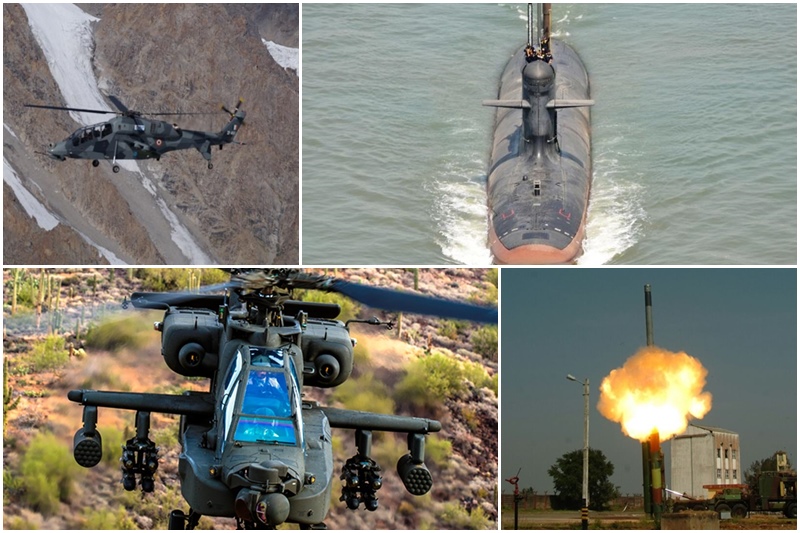For a very long time, India had to depend on imports in order to fulfill its defence arsenals. Things have changed for good in the last 7-8 years of PM Modi’s regime. Indian armed forces are steadily becoming self-dependent.
68 percent of funds will be used for buying made in India weapons
According to a report by Economic Times, in 2022, Indian armed forces will be using 68 percent of their capital outlay for buying indigenously manufactured arms and ammunition. This comes on the back of stellar spending of 64 percent of total allotment by armed forces on made in India arms in the year 2021.
Read more: INS Vishakhapatnam Naval Destroyer is 75% Made in India and a 100% lethal
In the year 2021, the Indian army used 72 percent of its funds for buying locally made defence equipment. Indian Navy came second in its indigenous spending with the utilisation of 65.9 percent of its funds for the purpose. Indian Air Force could spend only 59.2 percent for buying locally made items as it had more obligations towards paying the bills for Rafale fighters, its ancillary equipment and the S-400 air defence system.
All three forces were handed Rs 1,13,717.58 crore for buying equipment.
Separate targets have been set for all three forces
For the year 2022, Rs 1,17,400 crore has been earmarked for spending by all three branches. At least 68 percent of the above amount has to be spent on buying indigenous weapons. Specific spending targets have been set for different uniforms.
Indian Navy has been given the task to use 70 percent of its total outlay for the purpose, while Air Force will vouch for using 62 percent of its funds for indigenous buying. Indian Army will be required to use 75-76 percent of its allocated capital for indigenous buying.
The target is to bring import dependence to zero
The increased push towards made in India products comes at the backdrop of PM Modi’s push towards phasing out imported defence equipment from the nation’s armed forces. The Union government wants to ensure that 100 percent of weapons used for the nation’s protection should be produced in India.
However, Indian local defence manufacturing will take time to mature and provide weapons as potent and as reliable as the imported ones. This problem is especially exacerbated in items requiring superior and fine-tuned use of technology.
Technology transfer clause-A catalyst for change in weightage of defence products
Since it is not possible to suddenly reduce India’s dependence on defence imports to zero, the government added a technology transfer clause to its deal. Under this, a foreign country selling its product in India would have to provide technical know-how to Indian companies and the government.
Now our armed forces are slowly decreasing their reliance on imported items. The gradual decrease will ensure that local defence manufacturing units get ample time for developing an efficient production house. Moreover, local companies will also be benefiting from the transfer of technologies from companies providing weapons to India.
Read more: Aatmanirbhar Bharat and Make in India schemes are all set to make India a global defence powerhouse
Recent developments and push towards defence exports
In March 2021, TFI had reported that we are now importing 33 percent fewer arms from foreign nations. In November 2021, Rajnath Singh, our defence minister announced that soon more than 90 percent of defence equipment will be manufactured in India. Within two months, India cancelled deals involving imports of arms and ammunition in the backdrop of sprawling defence manufacturing under the Make in India initiative.
Read more: Defence products’ exports of India to cross Rs. 35000 target
Various other steps like removing bureaucratic hurdles bring transparency in agents’ involvement, establishing separate defence corridors have been taken to ensure that our defence production outpaces the world. These steps will ensure that India does not just produce for itself, but it is also able to become a reliable defence exporter.
Read more: India eyeing to become a major defence exporter, 85 countries on the radar
India is emerging as one of the most formidable nuclear powers in the world. All nuclear powers need to have at least one basic requirement and that is they need to be AATMANIRBHAR in arms. With the Make in India initiative, India is establishing itself as a peace-oriented counterforce to China’s threat.
